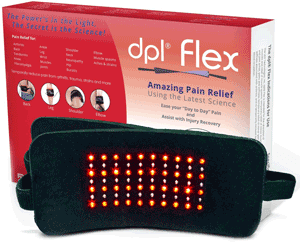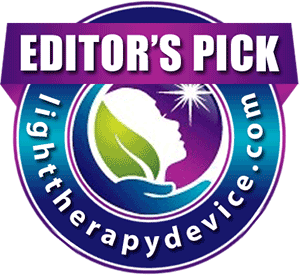Vitiligo is a skin disorder characterized by patches of white, or depigmented skin. It occurs when melanocytes, skin cells responsible for producing skin pigments, die off. The patches can be found anywhere on the body.1
Vitiligo is not a life threatening condition and is generally asymptomatic. However, its progression is unpredictable and varies considerably per person.1
Dermatologists, or skin doctors, caution against undervaluing its impact on affected individuals.2 The psychological distress can be devastating to the person with vitiligo. Low self-esteem, social isolation, and depression are common sequelae to the condition.3
What causes vitiligo? The answer to this question remains unknown. It may result from your genetics, or it could be due to problems with your immune system. More research is needed.1
Fortunately, while scientists delve into the answers to these questions, plenty of options are available now to manage your symptoms.
A dermatologist can help you explore these options to devise a treatment plan that works best for you.
What might they recommend?
- Cosmetic options, including make-up or self-tanners to camouflage skin discoloration. Given that any therapy has associated risks, individuals with mild cases of vitiligo may prefer to avoid them when possible.3
- Medications applied to the skin, usually high-strength corticosteroids. These medications often have side effects, such as thinning and drying of the skin. Pimecrolimus and tacrolimus may be viable alternatives that are often prescribed. Clinical studies are underway.3
- Light therapy, such as narrow band ultraviolet B (NBUVB), psoralen ultraviolet A (PUVA),3 or excimer laser therapies.4 NBUVB is generally reserved for individuals who have been unsuccessful in managing their symptoms with other treatments, who have widespread vitiligo, or whose condition is otherwise significantly debilitating. It is preferred over PUVA because it is safer and more effective.3 Excimer laser therapy is a new therapy that is sometimes used.4
- Surgery, namely split-skin grafting. Skin grafting involves the transplant of skin from one location to another. Split-skin only involves the upper layers of the skin. A dermatologist must assess if an individual’s lesions are stable enough for them to benefit from this approach. Generally, this option is offered to adults only.3
- Psychological counselling. For many individuals, vitiligo is a lifelong condition. Coping strategies are important, including educating one’s self about the condition and connecting with others who have vitiligo. Counseling may help.3
What do we know about treating vitiligo using light therapy?
NB-UVB is a safe, effective, and well-established therapy. Dermatologists often use it to treat patients with vitiligo.4
NB-UVB uses the 311-312 portion of the UVB spectrum. It stimulates melanocytes to produce melanin, or skin pigment.5 Normally, it is administered three times a week with a maximum of 200 sessions. In contrast to other light therapies, such as oral PUVA, no oral medications or protective eye-wear are required to undergo the treatment.3
Dermatologists caution that while NB-UVB is a great option for certain cases of vitiligo, it cannot alter the course of the disease. In addition, not every patient will see results. Your doctor will likely take photographs of the affected skin every 2-3 months to determine whether the treatment is working for you.3
NB-UVB is time consuming and requires commitment from the patient.6 Often, patients must undergo at least 6 to 12 months of treatment for optimized results.4 For this reason, dermatologists are exploring the option of home-based light therapies.6
PUVA is another option for light therapy of vitiligo. Psoralen is a plant based chemical that can be applied to the skin prior to light exposure. It has a long history of use for a variety of skin conditions, dating back to biblical times.3 PUVA combines the use of psoralen with UVA radiation derived from 320-340 portion of the spectrum. Psoralen can be applied to the skin or taken by mouth.7
Formerly the gold standard treatment for vitiligo,5 several clinical trials have explored this form of therapy for management of vitiligo. Dermatologists conclude that while it may be effective in some patients, NB-UVB is the preferred option.3
PUVA is not recommended in children. No more than 150 treatments should be applied to adults. Like NB-UVB therapy, PUVA cannot alter the disease course of vitiligo and not every patient will see results. Serial photographs are recommended to monitor the response to therapy.3
Excimer laser is a relatively new treatment modality that some dermatologists use in their practice. This form of light therapy enables the dermatologist target treatment to the affected sites only, using the 308 nm portion of the spectrum. Studies suggest it may be safe and effective in treating vitiligo. However, research in this area is limited.4
Can patients with vitiligo self-administer light therapy at home?
The answer is yes. Home-based NB-UVB therapy was introduced in 1979. Current evidence suggests that it may be safe and effective in treating vitiligo. In addition, it is cost-effective and convenient.6
Your dermatologist can prescribe home-based light therapy if she considers you to be a suitable candidate. She may suggest either a handheld device or a full-length panel, depending on the size of the area being treated. She may be able to connect you with options that are covered by insurance.
Let’s wrap up by discussing the various options on the market if you are interest in at-home light therapy for vitiligo.
Clarify Medical’s Home Light Therapy System ($999.00 from www.clarifymed.com), is comprised of a handheld device synced to an app that connects you with a dermatologist. This app allows for two-way communication between you and your prescribing dermatologist. UVB Lamp for Vitiligo Treatment Narrow Band R-3VT is another portable, lightweight, and operator-friendly option on the market for at-home vitiligo treatment. Daavlin’s DermaPal (available from www.daavlin.com) is a handheld device that can be used for spot treatment of affected skin, whereas Daavlin’s UV Series is comprised of full body panels for widespread treatment. Coordination with a sales representative is required for purchase. Elited FDA Approved Hand-held UBV Light Therapy Home Phototherapy for Skin Disorder Treatment is easily available on Amazon.com ($299). However, we strongly advise that you speak with your dermatologist before trying it.
References
1. Matin R. Vitiligo in Adults and Children. BMJ Clin Evid. 2011; 2011: 1717.
2. American Academy of Dermatology. Vitiligo. Available at: https://www.aad.org/public/diseases/color-problems/vitiligo. Accessed October 28, 2018.
3. Gawkrodger DJ, Ormerod AD, Shaw L et al. Guidelines for the diagnosis and management of vitiligo. British Journal of Dermatology 2008; 159: 1051-1076.
4. AlGhamdi KM, Khurram H, Taieb A. Survey of dermatologists’ phototherapy practices for vitiligo. Indian J Dermatol Venereol Leprol. 2012;78(1):74-81.
5. Vitiligo Support International. Phototherapy Treatment. Available at: https://www.vitiligosupport.org/treatments_and_research/phototherapy.cfm. Accessed October 28, 2018.
6. Xiaofeng Shan et al. Narrow-band ultraviolet B home phototherapy in vitiligo. Indian J Dermatol Veneral Leprol. 2014;80(4):336-338.
7. Taieb A, Alomar A, Bohm ML et al. Guidelines for the management of vitiligo: the European Dermatology Forum consensus. British Journal of Dermatology 2013; 168: 5-19.


